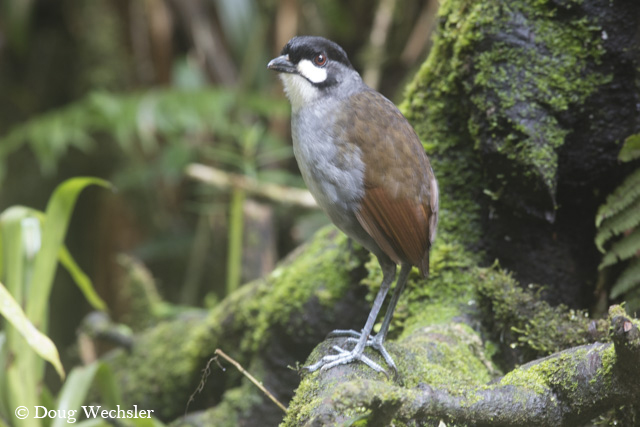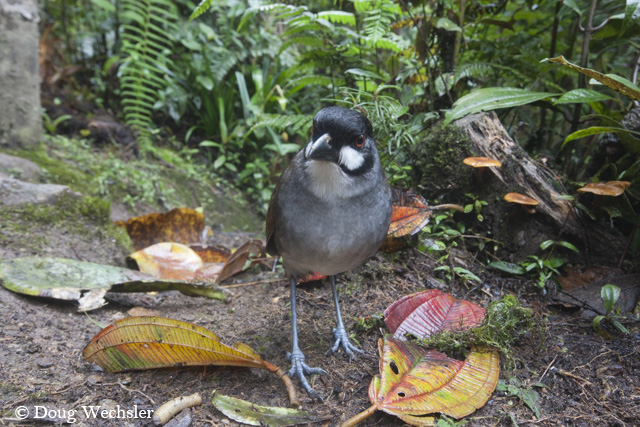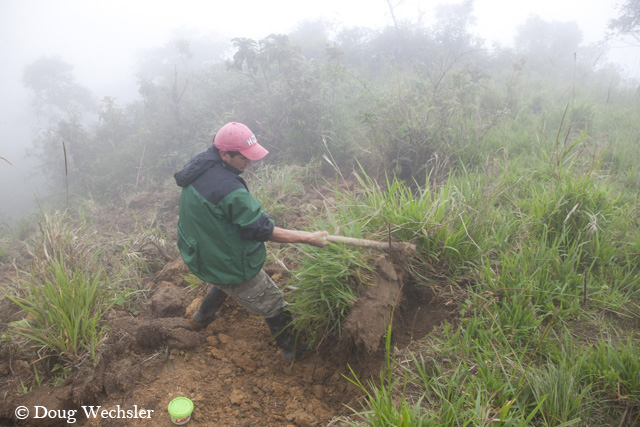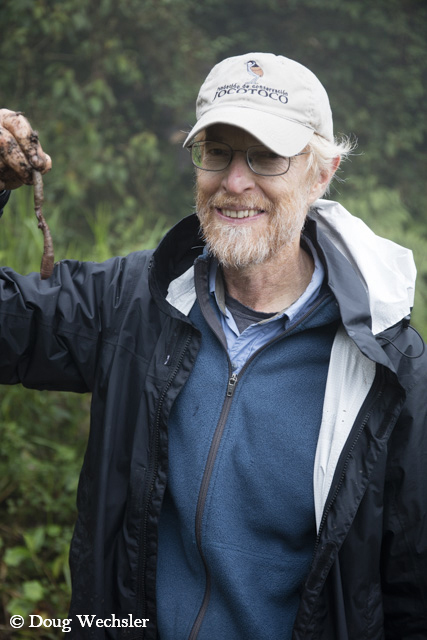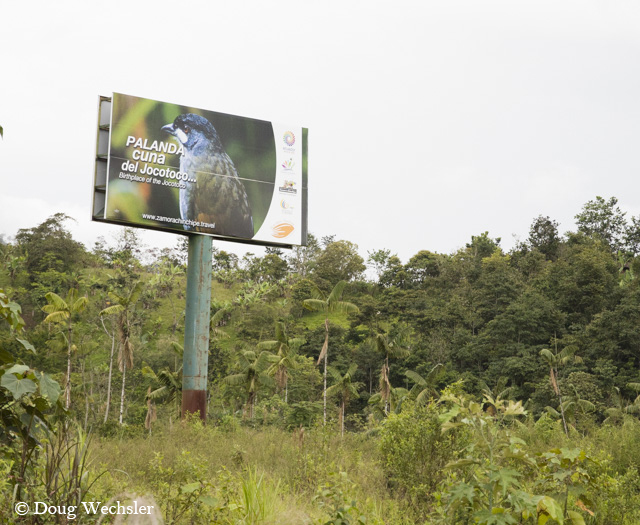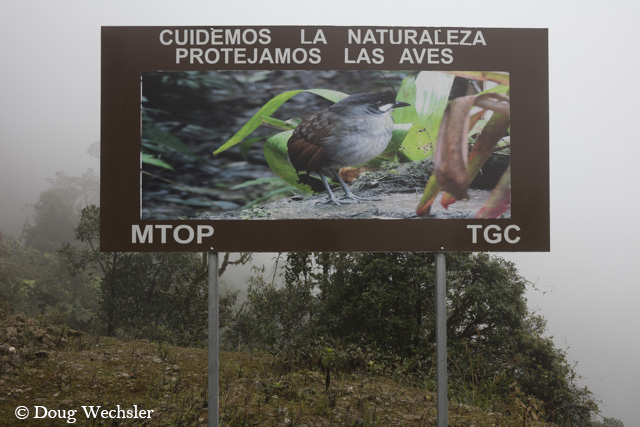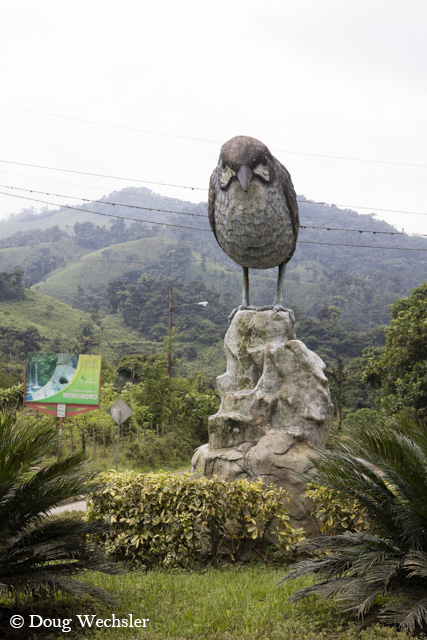The discovery of a new species, Grallaria ridgelyi, set off a series of events that snowballed into founding of the Jocotoco Conservation Foundation and the creation of eleven reserves (so far). The bird that started it all, the Jocotoco Antpitta, remains the flagship species of the foundation. It is the main reason so many birders visit the beautiful Tapichalaca Reserve.
The jocotoco inhabits a wet, cloud forest at 2,500m elevation in Zamora-Chinchipe Province.
The distinctive white cheek patches are unique among antpittas.
Few jocotocos have been found outside of Tapichalaca Reserve.
Forest guards feed a pair of jocotocos every morning. This allows birders to see this rare bird without employing playback. Playback, the use of recordings of a bird’s song to elicit a territorial response, can be disruptive if over-used.
It takes considerable effort to obtain the worms for the jocotocos. The pair eats about 1/2 cup of worms a day. The best worm collection site requires a walk down a steep hill.
The Andean worms are quite large. Here’s one of average size.
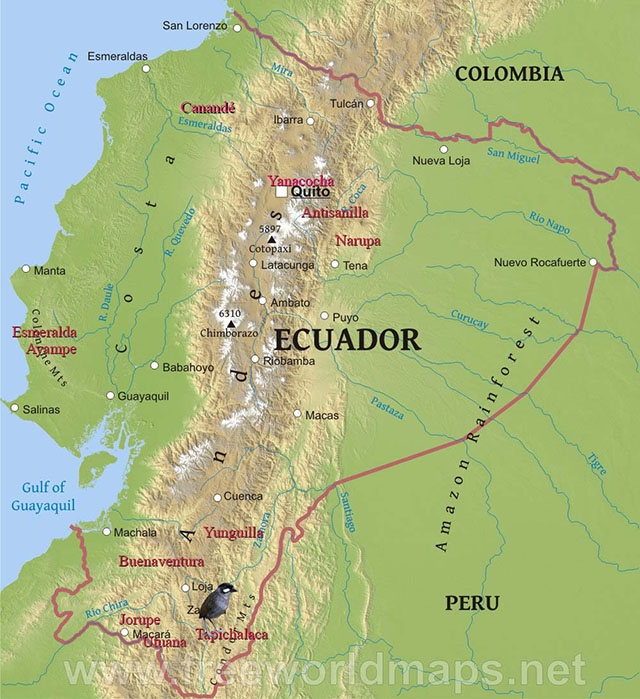
Locations of 11 Jocotoco Reserves Base map: www.freeworldmaps.net/southamerica/ecuador/
Since the discovery of the jocotoco and the establishment of Tapichalaca Reserve in 1999, ten more reserves have been created by the Jocotoco Foundation, each centered around an endangered or threatened bird or regional avifauna. If you would like to help support this important conservation effort, tax-deductable donations to the Jocotoco Conservation Foundation can be made through:
Rain Forest Trust (US)
American Bird Conservancy (US)
Word Land Trust (UK)
Be sure to specify that the donation is for the Jocotoco Conservation Foundation and the entire amount will go directly toward bird conservation in Ecuador.
The image of the jocootoco appears in many places in southern Ecuador and is a source of regional pride.

Artwork on roadside shelter: Powerful Woodpecker, Rufous-capped Thornbill, Golden-plumed Parakeet, Jocotoco Antpitta, Mountain Tapir
This sculpture of the jocotoco stands far from it’s native home, but near another Jocotoco Conservation Foundation property, Buenaventura Reserve.



